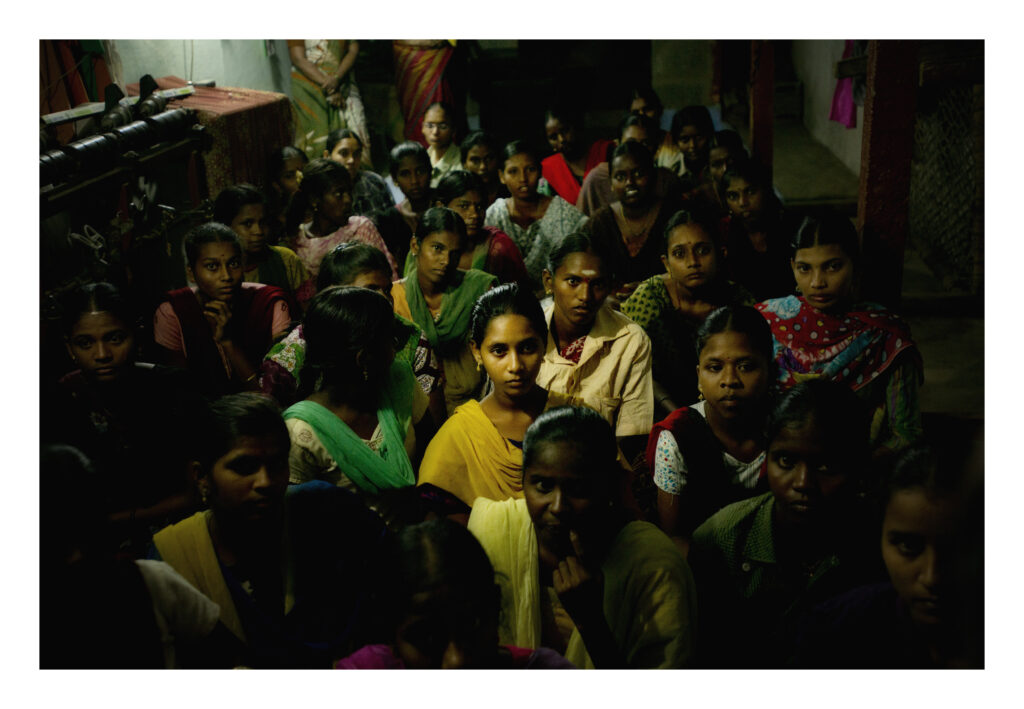International Women’s Day: How does it link to sustainability?
What is International Women’s Day?
Marked annually on 8th March , International Women’s Day (IWD) is a day celebrating the social, economic, cultural, and political achievements of women across the globe.
It is a day equally dedicated to raising awareness of the prevailing plight of women worldwide, with the goal of dismantling discrimination, driving equal opportunities and empowering women and girls to help them reach their full potential.
The history of International Women’s Day
In 1908, 15,000 women marched through New York City demanding shorter hours, better pay and voting rights, spurring a series of events that led to what we now know as IWD.
In 1909, the first National Woman’s Day was observed across the US on 28 February.
Then, in 1910 at the International Conference of Working Women in Copenhagen, a woman named Clara Zetkin (Leader of the ‘Women’s Office’ for the Social Democratic Party in Germany) first proposed the idea of an International Women’s Day – a day once a year in every country for women to celebrate their achievements and to press for their demands. [1]
International Women’s Day has been celebrated every year since 1911, when more than one million people across Austria, Denmark, Germany and Switzerland gathered for IWD rallies campaigning for women’s rights to work, vote, be trained, to hold public office and end discrimination. [1]
Though for those of us in the UK, it may appear we have come a long way since then, we still have a long way to go.

International Women’s Day: Why is it important?
International Women’s Day is important because it is about unification.
IWD is not country, race, group or organisation specific. It is powered by universal acknowledgement and action of how we can strive towards an equal society for all. And it is a day that belongs collectively to all women, everywhere.
In the words of feminist, activist and journalist, Gloria Steinem:
“The story of women’s struggle for equality belongs to no single feminist nor to any one organization but to the collective efforts of all who care about human rights.”
The bottom line is, Women’s Rights are Human Rights. And by allowing and protecting the rights that all women deserve, we can establish a better world not just for women, but for everyone.
As Asha-Rose Migiro, Former Deputy Secretary-General of the United Nations, once said:
“Gender equality and the empowerment of women and girls is not just a goal in itself, but a key to sustainable development, economic growth, and peace and security”. [2]
International Women’s Day: What are some of the human rights issues women are facing across the globe?
After Covid wiped out a significant amount of progress in closing the gender gap, gender parity across the globe is now back to 2019 levels. This means it will be 2154 – 130 years – until women across the globe will eventually be treated as equals, if the rate of progress stays the same. [3]
But progress isn’t linear.
“Everywhere, crises continue to exact their highest toll on women and girls,” says UN Women Executive Director Sima Bahous. [4] Indeed, women and children account for 70% of the 30,000 people killed in Gaza since October 7, 2023. [5]
The fact remains that every day, women, all around the world, continue to face all manner of challenges and hardships in our continued fight for women’s rights and gender equality.
In 2022 we witnessed the Taliban’s crackdowns on the rights of women and girls in Afghanistan and the brutal suppression of women-led protests in Iran, following the death of Mahsa Amini. Plus, the US overturned the federal right to abortion.
Women and girls experience gender-based violence in staggering numbers
- 30% of all women worldwide who have been in a relationship have experienced physical and/or sexual violence committed against them by a partner. [6]
- Women are more likely to be the victims of so-called “honour crimes”. [7]
- Every year, 4 million girls are at risk of undergoing female genital mutilation (FGM). [8] Due to COVID-19 related programme disruptions, UNFPA estimates that 2 million more cases of FGM that could have otherwise been prevented will occur over the next decade. [9]
Women and girls are at high risk of being victims of sexual abuse and/or harassment
- In the UK, 1 in 5 women (21%) aged 18-55 have experienced harassment or abuse online. [10]
- 71% of UK women have been sexually harassed in public. This rises to 86% among 18-24-year-olds. [11]
- More than 1 in 5 (22.9%) women aged 16 to 74 have experienced sexual assault (including attempts) since the age of 16. [12]
- Between April 2019 and March 2020, 2.9% of women (approximately 618,000) aged 16 to 74 experienced rape, assault by penetration, sexual assault or indecent exposure (or attempts). [12]
Women and girls, particularly in developing countries, continue to face barriers to education and employment
- Women account for two-thirds of the world’s illiterate. [13]
- Nine in ten countries have laws impeding women’s economic opportunities, such as those which bar women from factory jobs, working at night, or getting a job without permission from their husband. [14]
- The pandemic triggered an economic recession. This led to huge job losses in the services sectors where women are over-represented. As such, women lost their jobs at a much faster rate than men. [15]
- In Afghanistan, under the oppressive rule of the Taliban, women are being denied their hard-fought rights, including their rights to an education, political participation and to work. The Taliban have closed secondary schools for girls and banned girls above age 12 from going to school.

Women and girls continue to face the disadvantages of workplace discrimination the gender pay gap
- Globally, the gender pay gap stands at 16%. For women of colour, immigrant women, and women with children, the difference is even greater. [16]
- In the UK the gender pay gap increased to 15.4%, from 14.9% in 2020. [17]
- Due to prevailing workplace discrimination and the gender pay gap, women face a lifetime of financial disparity. This increases women’s risk of poverty in later life and prevents them from fully exercising autonomy. [7]
Women are continuously withheld from positions of authority and power
- Women hold only 25% of administrative and managerial positions in the business world – 32% of businesses have no women in senior management positions. [14]
- Women still hold only 22% of seats in single or lower houses of national parliament. [14]
- Less than 20% of the world’s landholders are women. [18]
Hunger and poverty disproportionately affect women and girls
- An estimated 60% of chronically hungry people are women and girls. [19]
It’s little wonder the UN reports “the world is failing girls and women”. [20] The gender snapshot 2023 warns that, if current trends continue, more than 340 million women and girls – an estimated 8 per cent of the world’s female population – will live in extreme poverty by 2030, and close to one in four will experience moderate or severe food insecurity.
REFERENCES
[1] International Women’s Day, History of International Women’s Day
[2] UNFP, News
[3] World Economic Forum, Global Gender Gap Report 2023
[4] UN Women | Statement: Rising to the challenges of 2023 for women and girls
[5] UN Women | Gender Alert: The Gendered Impact of the Crisis in Gaza
[6] World Health Organisation, Violence against women
[7] https://www.amnesty.org/en/what-we-do/discrimination/womens-rights/
[8 4] UNFPA, UNFPA-UNICEF Joint Programme on the Elimination of Female Genital Mutilation
[9 5] UNFPA, COVID-19 impact brief for UNFPA, p.2 ; UN Women report, “Beyond COVID-19: A Feminist Plan for Sustainability and Social Justice”, p.36
[10 6] Ipsos MORI poll for Amnesty International UK, 2017
[11 7] Prevalence and reporting of sexual harassment in UK public spaces, A report by the APPG for UN Women, p.6
[12 8] Office for National Statistics Crime Survey for England and Wales
[13 9] UNESCO, Literacy Rates Continue to Rise from One Generation to the Next, p.1
[14 10] UNDP Linkages Gender and CC Policy Brief, p.5
[15 11] ILO Policy Brief, A gender-responsive employment recovery: Building back fairer
[16 12] UN Women, Everything you need to Know about equal pay
[17 13] Office for National Statistics, Gender pay gap in the UK
[18 14] UN Women, Facts and Figures
[19] World Food Programme, Gender Policy, p.3
[16] UNFP, News
[17] World Economic Forum, Global Gender Gap Report 2023
[18] UN Women | Statement: Rising to the challenges of 2023 for women and girls
[19] UN Women | Gender Alert: The Gendered Impact of the Crisis in Gaza
[20] UN Women | The world is failing girls and women, according to new UN report
Main image: Burcu Köleli for UN Women (2022)

